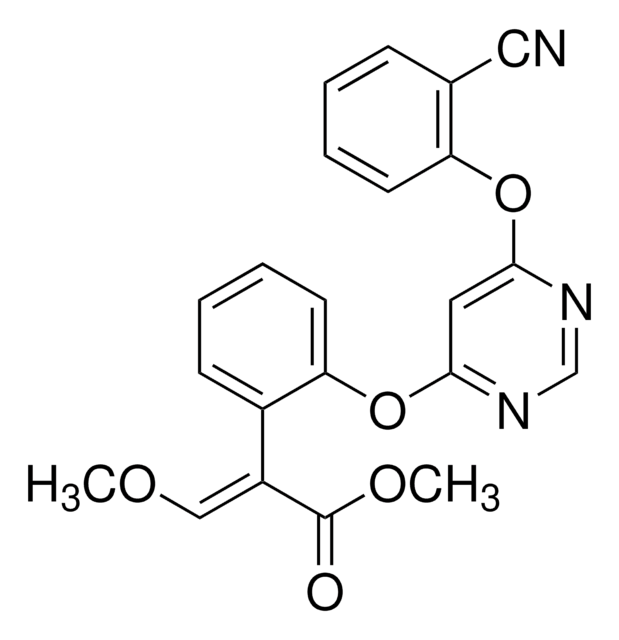About This Item
グレード
analytical standard
品質水準
製品種目
PESTANAL®
シェルフライフ
limited shelf life, expiry date on the label
テクニック
HPLC: suitable
gas chromatography (GC): suitable
アプリケーション
agriculture
cleaning products
cosmetics
environmental
food and beverages
personal care
フォーマット
neat
SMILES記法
OC(c1ccc(Cl)cc1)(c2cncnc2)c3ccccc3Cl
InChI
1S/C17H12Cl2N2O/c18-14-7-5-12(6-8-14)17(22,13-9-20-11-21-10-13)15-3-1-2-4-16(15)19/h1-11,22H
InChI Key
NHOWDZOIZKMVAI-UHFFFAOYSA-N
類似した製品をお探しですか? 訪問 製品比較ガイド
関連するカテゴリー
詳細
アプリケーション
- Honeys, honeybees and pollens by QuEChERS extraction followed by analysis using liquid chromatography-electrospray ionization-tandem mass spectrometry (LC-ESI-LC-MS/MS) combined with multiple reaction monitoring (MRM) detection.
- Grapes by ethyl acetate extraction, dispersive solid phase extraction (d-SPE) clean-up and LC-ESI-MS/MS with MRM detection.
- Fruit-based baby food samples by programmed temperature vaporizer injection-low pressure gas chromatography coupled with high resolution time-of-flight mass spectrometry (PTV-LP-GC-HR-TOF-MS).
- Foodstuffs by capillary GC-MS equipped with electron impact (EI) mode of ionization.
- Soya grain samples by LC-ESI-MS/MS.
法的情報
シグナルワード
Warning
危険有害性情報
危険有害性の分類
Aquatic Chronic 2 - Lact. - Repr. 2
保管分類コード
11 - Combustible Solids
WGK
WGK 2
引火点(°F)
212.0 °F - closed cup
引火点(℃)
100 °C - closed cup
個人用保護具 (PPE)
Eyeshields, Gloves, type P3 (EN 143) respirator cartridges
適用法令
試験研究用途を考慮した関連法令を主に挙げております。化学物質以外については、一部の情報のみ提供しています。 製品を安全かつ合法的に使用することは、使用者の義務です。最新情報により修正される場合があります。WEBの反映には時間を要することがあるため、適宜SDSをご参照ください。
労働安全衛生法名称等を表示すべき危険物及び有害物
名称等を表示すべき危険物及び有害物
労働安全衛生法名称等を通知すべき危険物及び有害物
名称等を通知すべき危険物及び有害物
Jan Code
45484-BULK:
45484-250MG:
45484-VAR:
45484-1EA:
Choose from one of the most recent versions:
この製品を見ている人はこちらもチェック
ライフサイエンス、有機合成、材料科学、クロマトグラフィー、分析など、あらゆる分野の研究に経験のあるメンバーがおります。.
製品に関するお問い合わせはこちら(テクニカルサービス)



